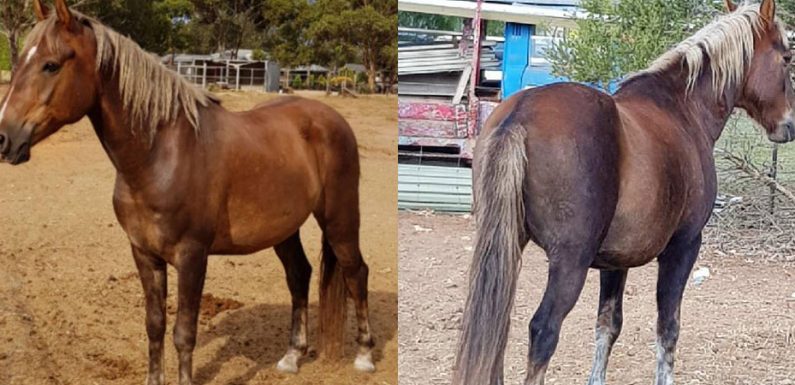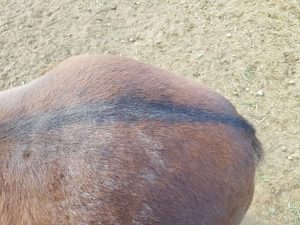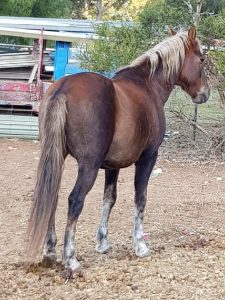

We have an answer!
Zeus is actually chestnut, not taffy (silver) at all. He also has two copies of d1 (nd1).
Overall, we tested Zeus for agouti, red/black, silver, cream, dun/d1 and W20.
The agouti and red/black tests were to find out his base coat colour (chestnut vs. bay). He came back as having two copies of red (e e) and two copies of the bay factor (A A). Horses with two copies of red (e e) are chestnut-based. Zeus’ agouti genotype does not affect his chestnut colour, but it means that neither his sire or dam was black, and if he was a stallion he would never produce black-based foals.
The silver test was to see if he was a taffy (aka silver) horse. It came back negative.

The cream test was to check whether he was in fact a chocolate palomino. It was also negative.
We also tested Zeus for dun and d1 to see if we could find the cause of his big dorsal stripe. He tested as having two copies of d1 (aka nd1).
Finally we tested him for W20. W20 can cause white markings. This was a bit of a long shot because Zeus doesn’t really have much white, and not too surprisingly it came back negative too.

So overall Zeus is a flaxen liver chestnut. It’s a beautiful colour and quite rare. At this stage there are no genetic tests for either the liver or flaxen parts of this type of colouring.